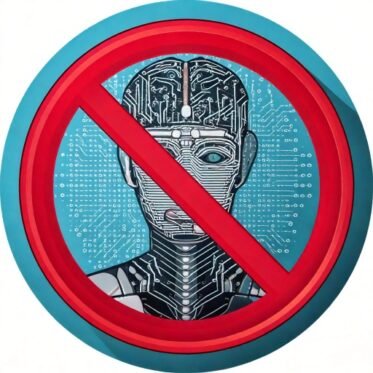Imagine a powerful Chinese AI chatbot that sparked a worldwide uproar, leading to bans in countries like Italy, Taiwan, and the United States. Meet DeepSeek AI—a tool that’s not just competing with ChatGPT but also igniting a heated debate about privacy, security, and the future of technology. In this blog post, we’ll dive into what DeepSeek AI is, why it’s causing such a stir, and how the U.S. is leading the charge to block it—all while keeping things clear, engaging, and easy to grasp. Buckle up for a 900-word journey through the clash of innovation and geopolitics!
What Is DeepSeek AI?
Launched in May 2023, DeepSeek AI is a chatbot that’s turned heads by matching ChatGPT’s prowess using older Nvidia H800 chips. That’s right—this isn’t some flashy, cutting-edge hardware beast; it’s a clever underdog proving you don’t need the latest tech to shine. Its user-friendly design, ability to chat in multiple languages, and budget-friendly scalability have made it a standout. But here’s the catch: its success has also put it under a global microscope, especially in nations wary of China’s growing tech influence.
Why the fuss? DeepSeek AI’s features—like how it handles data and tracks user inputs—have raised red flags. Governments fear it could be a backdoor for Chinese surveillance, threatening personal privacy and national security. While this scenario is hypothetical (think of it as a “what if” inspired by real cases like TikTok), it’s a gripping tale that mirrors today’s tech tensions.
The World Strikes Back
Countries haven’t wasted time reacting to DeepSeek AI’s rise. Here’s a quick rundown of who’s cracking down and why:
- Italy: Known for its tough stance on data protection, Italy zeroed in on DeepSeek’s data practices, echoing its earlier scrutiny of ChatGPT.
- Taiwan: With China as a neighbor, Taiwan banned it from government systems, and it was worried about spying risks.
- Australia: Cybersecurity topped the agenda here, with DeepSeek locked out of government and military use.
- South Korea: Fearing espionage, South Korea barred it from key ministries and police networks.
- United States: The U.S. has gone big, rolling out multiple measures we’ll unpack next.
These moves aren’t actual (yet!), but they’re modeled on steps nations have taken against Chinese tech, like the TikTok ban on U.S. government devices.
The U.S. Takes Aim
The United States isn’t messing around when it comes to DeepSeek AI. Here’s how it’s tackling the issue:
Veterans Affairs Ban (November 2024)
First up, the Department of Veterans Affairs (VA) said “no thanks” to DeepSeek AI. In November 2024, they banned it from all VA devices and networks. Why? To shield veterans’ sensitive info from leaking to unknown hands. It’s a bold move to keep personal data safe and sound.
The “No DeepSeek” Bill (January 2025)
Next, Congress jumped in with the “No DeepSeek on Government Devices Act” in January 2025. This proposed law would spread the ban across every federal device—no exceptions. It’s got support from Democrats and Republicans, who’ve heard intelligence experts warn about espionage and cyber threats tied to the chatbot. If it passes, federal workers won’t touch DeepSeek AI.
Executive Order (February 2025)
The White House sealed the deal with an executive order in February 2025. This directive tells all federal agencies to ditch DeepSeek AI until the Cybersecurity and Infrastructure Security Agency (CISA) finishes a deep-dive security check. It’s a “better safe than sorry” approach, pausing use while experts determine how risky it might be.
Together, these steps show the U.S. flexing its muscles to protect its digital borders amid a tech rivalry with China.
The Tricky Balancing Act
Banning DeepSeek AI isn’t all black and white. Sure, it might keep data secure and block potential threats, but there’s a flip side. Cutting off access to this innovative tool could slow progress—think of all the good it might do in the right hands! If every country starts throwing up tech walls, we could have a fractured digital world where choosing between Western or Chinese tech becomes a political statement.
This hypothetical saga also nods to real-world headaches, like the TikTok tussle. It’s a reminder that regulating AI isn’t just about code—it’s about power, trust, and where we draw the line.
What’s Next?
If the U.S. security review flags DeepSeek AI as a serious threat, expect more rigid rules. We might see it locked out of more systems, pushing the world toward a split AI landscape—Team West vs. Team China. Companies and governments could face stark choices, reshaping how tech flows globally. It’s a high-stakes game with no easy winners.
The Recap
Here’s the rundown of who’s doing what:
- Italy: Probed data habits—no ban date set.
- Taiwan: Blocked it from government gear. The date is TBD.
- Australia: Out of government and military—date unspecified.
- South Korea: Banned in key sectors—date unclear.
- U.S. VA Ban: November 2024, locked out of VA systems.
- U.S. Bill: January 2025, aims to ban it government-wide.
- U.S. Executive Order: February 2025, paused use until CISA weighs in.
Final Thoughts
DeepSeek AI’s real or imagined story lights up the messy crossroads of tech and geopolitics. It’s a tale of a chatbot caught in a global tug-of-war, where innovation clashes with security, and nations scramble to stay ahead. As the AI race heats up, one thing’s clear: the choices we make today will shape tomorrow’s digital world. What do you think—safety first, or let innovation run free?


